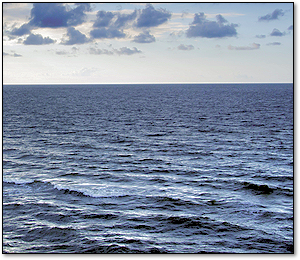Subscriber question:
"What is the proper way to ditch an airplane (not on floats) in water if needed?" - Jeff C.
Bob:
“The good news about a well-executed water landing is that it involves less deceleration violence than a normal landing in rough terrain, or a touchdown in rough terrain where you might encounter sudden stoppers like large trees or large boulders. And an airplane ditched at minimum speed in a normal landing attitude will not sink immediately. Intact wings and fuel tanks can provide flotation for several minutes.
 So – what are some techniques you should use to ditch an airplane properly?
So – what are some techniques you should use to ditch an airplane properly?
First, keep retractable landing gear up unless the AFM (Aircraft Flight Manual) or POH (Pilot Operating Handbook) advises otherwise. And use no more than an intermediate flap settings on a low wing airplane. Using full flaps on a low wing aircraft or extending landing gear on a retractable airplane will increase deceleration and make the airplane more likely to flip over, something to be avoided, if possible.
Touchdown parallel to a swell. If possible land on the crest or on the backside of a swell. Avoid landing into the face of a swell. Again, smooth deceleration is less of a hazard to occupants. Landing into the face of a swell will result in sudden deceleration which may render occupants unable to exit the aircraft. Remember to consider the wind when setting up to land. Remember that you can land parallel to a swell in two directions. Use the direction that will be most favorable in terms of groundspeed when touching down on the water.
If you choose to fly over water be certain you have appropriate gear on board including but not limited to life vests and possibly a raft and know how to use them and make sure you have adequate fuel reserves if crossing a large body of water.”
